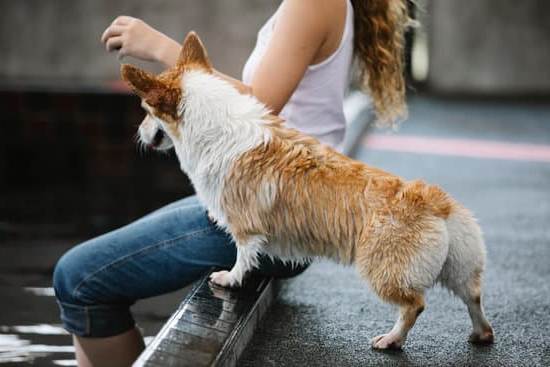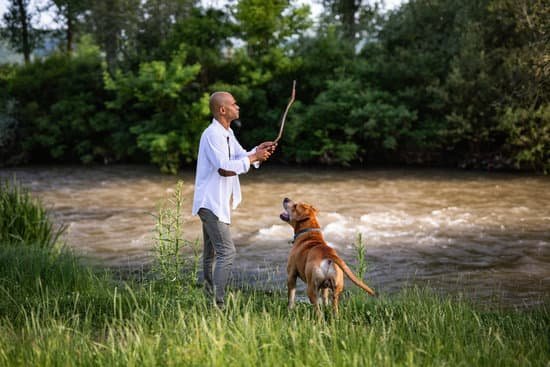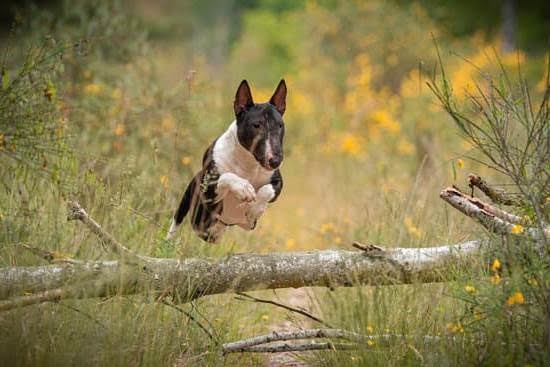Dog clicker training is a popular and effective method for teaching your dog new behaviors and commands. This technique involves using a handheld clicker to mark the desired behavior followed by a reward, typically a treat or praise. In this section, we will explore what dog clicker training is and the benefits of utilizing a clicker for training your furry companion.
Dog clicker training is based on the principles of operant conditioning, where the sound of the clicker serves as a precise marker to indicate the exact moment when your dog performs the correct behavior. This clear communication helps your dog understand what they are being rewarded for, making it easier for them to learn and remember specific commands.
One of the key benefits of using a clicker for training is its ability to provide immediate feedback to your dog, helping them quickly associate their actions with positive reinforcement. Additionally, clicker training can enhance communication between you and your dog, leading to a stronger bond and deeper understanding. In the following paragraphs, we will delve into how you can get started with dog clicker training and outline some basic commands that can be taught using this method.
How to Get Started With Dog Clicker Training
When starting out with dog clicker training, it’s important to have the right equipment. First and foremost, you’ll need a clicker. There are many different types of clickers available, so choose one that is comfortable for you to hold and easy to click. It’s also a good idea to have some high-value treats on hand, as rewards are an essential part of clicker training.
Once you have your equipment ready, it’s time to set up a training plan. Determine what commands or behaviors you want to work on with your dog, and break them down into achievable steps. For example, if you want to teach your dog to sit on command, you can start by clicking and treating when they move into a sitting position on their own.
When getting started with dog clicker training, consistency is key. Make sure that everyone in the household uses the same training techniques and cues so that your dog doesn’t get confused. Additionally, be patient and give your dog plenty of positive reinforcement as they learn new behaviors.
| Equipment | Description |
|---|---|
| Clicker | A handheld device that makes a distinctive clicking sound |
| Treats | High-value rewards such as small pieces of meat or cheese |
Basic Clicker Training Commands
One of the most popular and effective methods for training your dog is through the use of a technique called dog clicker training. This method involves using a small handheld device that makes a clicking sound when pressed, which is used to mark the behavior you want to reinforce in your dog.
There are several benefits to using a clicker for training, including its precision in marking desired behaviors and its ability to create clear communication between you and your dog.
To get started with dog clicker training, there are a few basic steps that you will need to follow. Firstly, you will need to purchase a clicker specifically designed for training dogs. These can typically be found at pet stores or online.
Once you have your clicker, it’s important to start off by conditioning your dog to understand the meaning of the click. This can be done by associating the sound of the click with treats, so that your dog learns to expect a reward whenever they hear the click.
Once you have properly introduced your dog to the clicker and they understand its significance, it’s time to start incorporating it into their training. There are several basic commands that can be taught using a clicker, such as teaching your dog to sit, stay, and come on command.
By consistently pairing the sound of the click with these commands and rewarding them with treats, your dog will quickly learn to associate the desired behaviors with the positive reinforcement provided through the use of the clicker.
| Benefit | Description |
|---|---|
| Precision in marking desired behaviors | Clickers provide a consistent and distinct signal for dogs |
| Clear communication between owner and dog | The use of a clicker creates a specific marker for desirable actions |
Advanced Clicker Training Techniques
Shaping Behavior With the Clicker
One advanced technique in dog clicker training is shaping behavior. This method involves breaking down a desired behavior into small, achievable steps and reinforcing each step with the clicker and treats.
For example, if you want to teach your dog to roll over, you would initially reinforce any movement towards a prone position, then eventually only reinforcing when your dog completes the full roll. Shaping behavior with the clicker requires patience and precise timing, but it can be a highly effective way to teach complex commands.
Adding Distractions to Clicker Training
Another advanced technique is adding distractions to clicker training. Once your dog has mastered basic commands in a controlled environment, it’s important to practice those commands in more distracting settings. This could include training at the park or around other animals or people. Using the clicker in these scenarios helps reinforce your dog’s training and teaches them to respond even when there are external stimuli vying for their attention.
Using the Clicker for Agility Training
Agility training is an excellent way to keep dogs active and engaged while strengthening their obedience skills. Clicker training can be extremely effective in teaching dogs the specific movements required for agility courses. By using the clicker to mark and reinforce correct behaviors during agility training, you can help your dog develop speed, accuracy, and confidence on the course.
When implementing these advanced clicker training techniques, it’s important for dog owners to remember that consistency and positive reinforcement are key. With dedication and regular practice, these techniques can help take your dog’s training to the next level, leading to a well-behaved and responsive canine companion.
Troubleshooting Common Clicker Training Issues
Some dogs may be initially wary of the clicker sound and may exhibit signs of fear or discomfort when the clicker is used during training. To address this issue, you can gradually desensitize your dog to the sound of the clicker by associating it with positive experiences. Start by clicking the device and immediately offering your dog a tasty treat or a favorite toy.
Repeat this process several times until your dog begins to associate the click with a reward. Gradually increase the time between the click and the reward as your dog becomes more comfortable with the sound.
Handling a Dog Who Becomes Dependent on the Clicker
While clickers are effective training tools, it’s important to transition your dog from relying solely on the clicker for cues. Once your dog has mastered a command using the clicker, slowly phase out the use of the device by intermittently clicking and treating, and eventually only rewarding them without the use of the clicker. This will help prevent your dog from becoming reliant on the sound of the click during training sessions.
Addressing Other Behavioral Challenges During Clicker Training
In some cases, you may encounter other behavioral challenges while using dog clicker training. Whether it’s excessive excitement, lack of focus, or difficulty understanding certain commands, it’s crucial to remain patient and consistent in your approach. Consider adjusting your training plan to address specific behavioral issues and seek guidance from professional trainers if needed. By tailoring your training methods to suit your dog’s individual needs, you can overcome these challenges and continue making progress with clicker training.
- Gradually desensitize your dog to the sound of the clicker
- Transition from relying solely on the clicker for cues
- Tailor your training methods to suit specific behavioral issues
Incorporating Positive Reinforcement Into Clicker Training
Using Treats Effectively With the Clicker
When it comes to clicker training, using treats as a form of positive reinforcement is essential. Treats should be high-value and enticing for your dog, such as small pieces of chicken or cheese. It’s important to only offer treats immediately after the click, so that your dog associates the sound of the clicker with the reward. Additionally, vary the type of treat given to keep your dog motivated and excited during training sessions.
Balancing Praise and Clicker Rewards
While treats are a powerful motivator in clicker training, it’s equally important to include verbal praise and physical affection as forms of positive reinforcement. Verbal cues like “good boy” or “well done” paired with petting or a belly rub can further reinforce the behavior you want to see in your dog. The combination of clicker rewards and verbal praise creates a well-rounded positive experience for your dog during training.
Ensuring a Positive Experience for Your Dog During Training
It’s crucial to make clicker training a fun and enjoyable experience for your dog. Keep training sessions short and upbeat to prevent your dog from becoming bored or disinterested. Be patient, calm, and consistent throughout the process, offering plenty of encouragement and rewards for successful responses to commands. By creating a positive atmosphere during training, you’ll foster a strong bond with your furry companion while achieving successful results through dog clicker training.
Clicker Training for Specific Behavioral Issues
When it comes to addressing specific behavioral issues in dogs, clicker training can be a highly effective tool. Whether you are dealing with excessive barking, leash pulling, or separation anxiety, utilizing a clicker can help to re-shape your dog’s behavior in a positive and rewarding way.
Here are some examples of how you can use dog clicker training to tackle common behavioral problems:
- Clicker training for excessive barking: When your dog is barking excessively, you can use the clicker to teach them the “quiet” command. Whenever your dog stops barking on command, immediately click and reward them with a treat. Repeat this process consistently to reinforce the desired behavior.
- Clicker training for leash pulling: If your dog tends to pull on the leash during walks, you can utilize the clicker to encourage loose leash walking. Each time your dog walks calmly by your side without pulling, click and reward them with a treat. Over time, they will learn that walking politely on a leash brings positive reinforcement.
- Clicker training for separation anxiety: For dogs struggling with separation anxiety, clicker training can help create positive associations with being alone. Start by clicking and treating your dog when you leave the room for short periods of time. Gradually increase the duration of your absences while continuing to use the clicker as a signal that good things are coming.
By incorporating dog clicker training into your approach for specific behavioral issues, you can effectively communicate with your furry friend in a way that is clear and rewarding. This method promotes positive reinforcement and helps dogs understand what behaviors lead to desirable outcomes. With patience and consistency, clicker training can make a significant difference in addressing challenging behaviors in dogs.
Clicker Training Success Stories
In conclusion, dog clicker training has proven to be an effective and versatile method for teaching new behaviors and addressing unwanted ones in dogs. The use of a clicker as a form of communication can not only make training more efficient but also strengthens the bond between the owner and their pet. By consistently marking desirable behaviors with a distinct sound, dogs quickly learn what is expected of them and what will earn them rewards.
As demonstrated in this article, there are numerous success stories of dogs who have thrived through clicker training. From overcoming excessive barking to learning agility skills, the positive results are apparent. With patience, consistency, and the right tools, owners can witness significant improvements in their pet’s behavior.
Overall, the use of positive reinforcement alongside the clicker creates a rewarding experience for both the dog and the owner. Seeing firsthand how dogs progress and become more confident as they master new commands is truly gratifying. With dedication and the guidance provided in this article, anyone can achieve successful outcomes through dog clicker training.
Frequently Asked Questions
Is a Clicker Good for Dog Training?
A clicker can be a helpful tool for dog training, as it provides a clear and consistent sound to mark the desired behavior. It helps reinforce positive behaviors and can create a strong communication between the dog and the trainer.
How Do You Clicker Train a Dog for Beginners?
Clicker training for beginners involves first associating the clicker sound with a reward, such as a treat. Once the dog understands this association, the trainer can then use the clicker to mark and reinforce specific behaviors, gradually shaping the desired actions through repetition and reward.
Is Clicker Training Good for Service Dogs?
Clicker training has been found to be effective for service dogs, as it allows for precise communication and reinforcement of desired behaviors. Whether it’s guiding visually impaired individuals or providing assistance to those with disabilities, clicker training can be used to teach service dogs complex tasks with precision and consistency.

Welcome to the blog! I am a professional dog trainer and have been working with dogs for many years. In this blog, I will be discussing various topics related to dog training, including tips, tricks, and advice. I hope you find this information helpful and informative. Thanks for reading!





